Moving: frequently underestimated
Moving always comes with unexpected problems. After living in Missoula, MT for the last two years, I moved up to Kalispell for this internship. I uprooted quite an extensive system of familiarity, but there are some connections that withstand the uprooting and room is made for new ones. I have had to regroup and reassess what relationships sustain me, and what resources and opportunities to pursue. The relationships built in human and ecological communities can both sustain and harm the player/actor and it is impossible in either world to live outside the web of connections. My co-intern and I have seen and learned a lot since we started a month ago, and below I share some stories of plants we encountered in their interconnected ecological webs, and the unusual and unique ways of life they devise to survive in their communities.
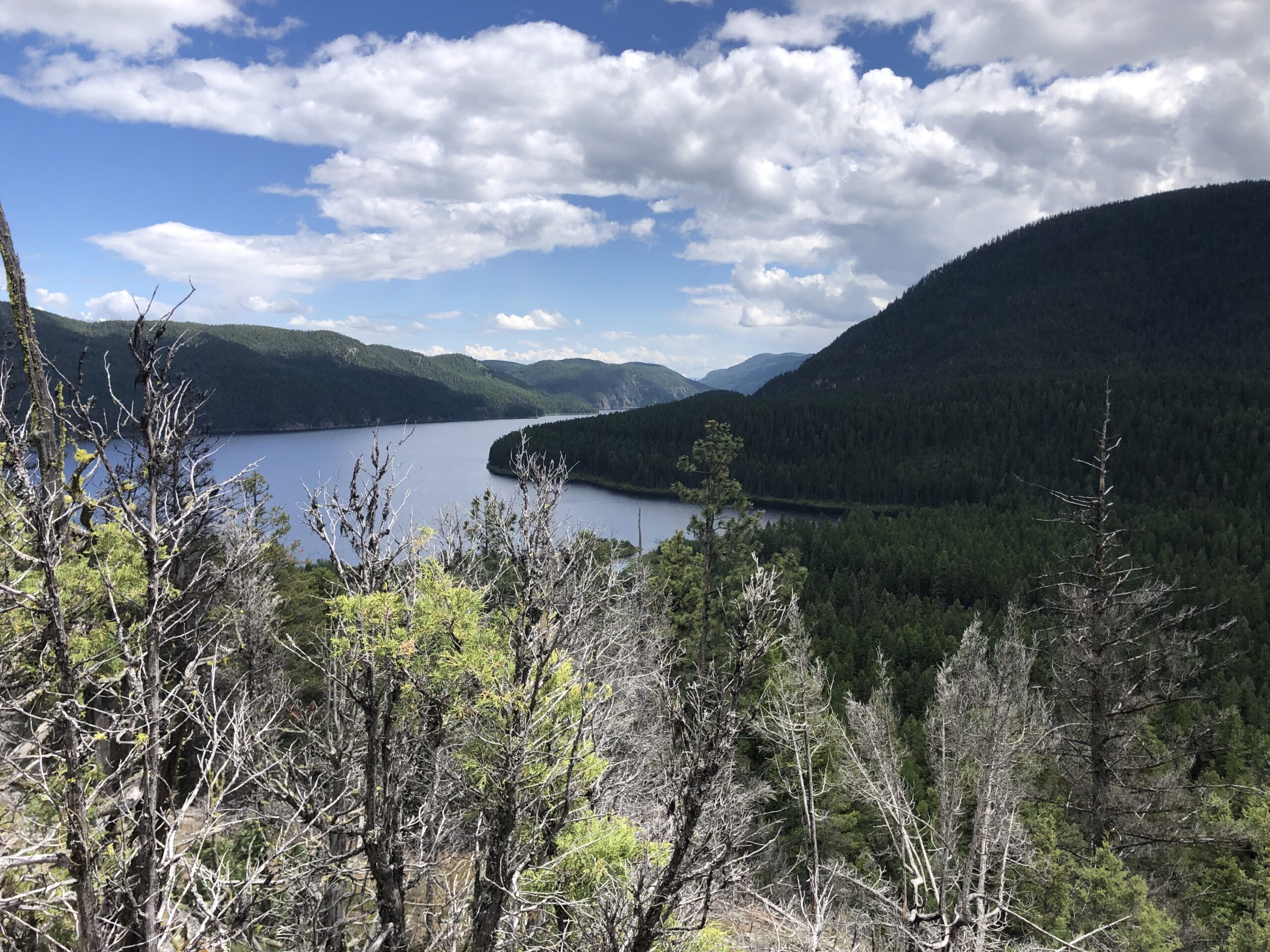
Busy bees and toxic pollen
Flowering plants can develop intimate relationships with their pollinators, like the bumble bee. Some plants require a physical vibration to release pollen held tightly to their anthers, and bumble bees, unlike honeybees, can perform the essential “buzz pollination” that can shake this pollen loose (Dolan et al. 2021). Montana is a uniquely diverse state for bumble bees, with 28 species documented in Montana out of the 45 total found in North America (north of Mexico). This month we participated in the Montana Bumble Bee Atlas project, a community science project gathering data for tracking and conserving bumble bees (Bumble Bee Atlas). We traveled up the gravel road running alongside the North Fork of the Kalispell River (west of Glacier Park) to reach meadows of lupine and buckwheat flowers. The catch-and-release survey we conducted was a small data point in this comprehensive project aimed at sampling hundreds of locations across Montana.
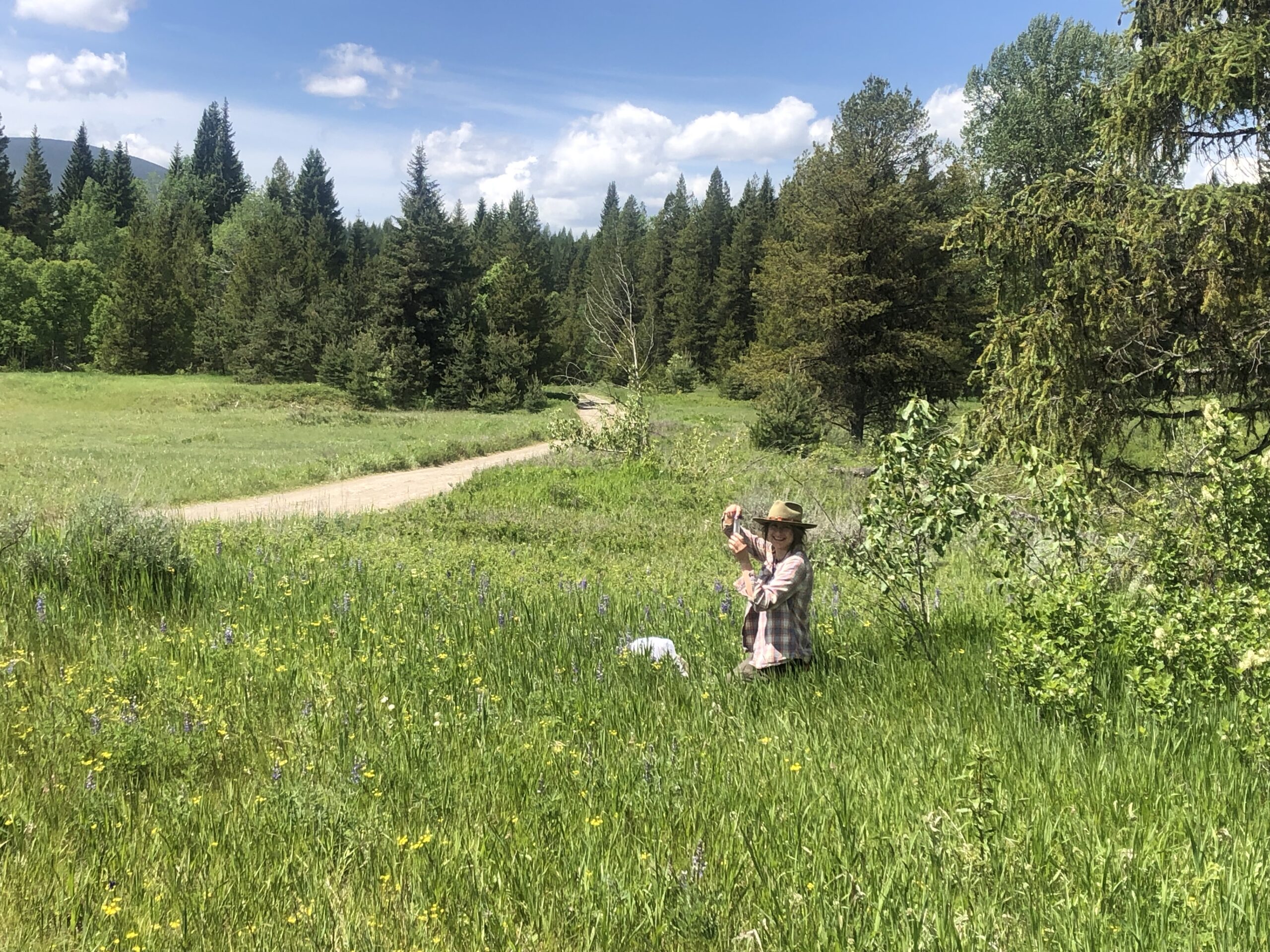

Some plants may require buzz pollination, but at least there are several different species of bumble bees to do the job. The Mountain death camas, Zigadenus elegans, has only one pollinator: the miner bee. The death camas is flowering right now, and the plant’s cream-colored flowers, dotted with green nectaries, look inviting. True to its name, however, the entire plant is toxic. Everything from the bulbs to the nectar and pollen contain the deadly neurotoxin zygacene. All pollinators but the miner bee, Andrena astragali, would drop dead if they tasted from this flower. A single bulb is enough to kill a human. Why would a plant kill all but one of its pollinators? The answer lies in the usefulness of the toxin to the miner bee. The kleptoparasitic cuckoo bee lays its eggs next to the miner bee eggs, expecting a meal from the food cache the miner bee left for its own young. Once hatched, the cuckoo bee eats the toxic food cache, laced with zygacene poison from the death camas plant. Only the miner bee has an innate immunity, so the kleptoparasite dies, ridding the miner beehive of the pest. In return, the mountain death-camas gains a loyal, mutually codependent pollinator (Mitton 2022).
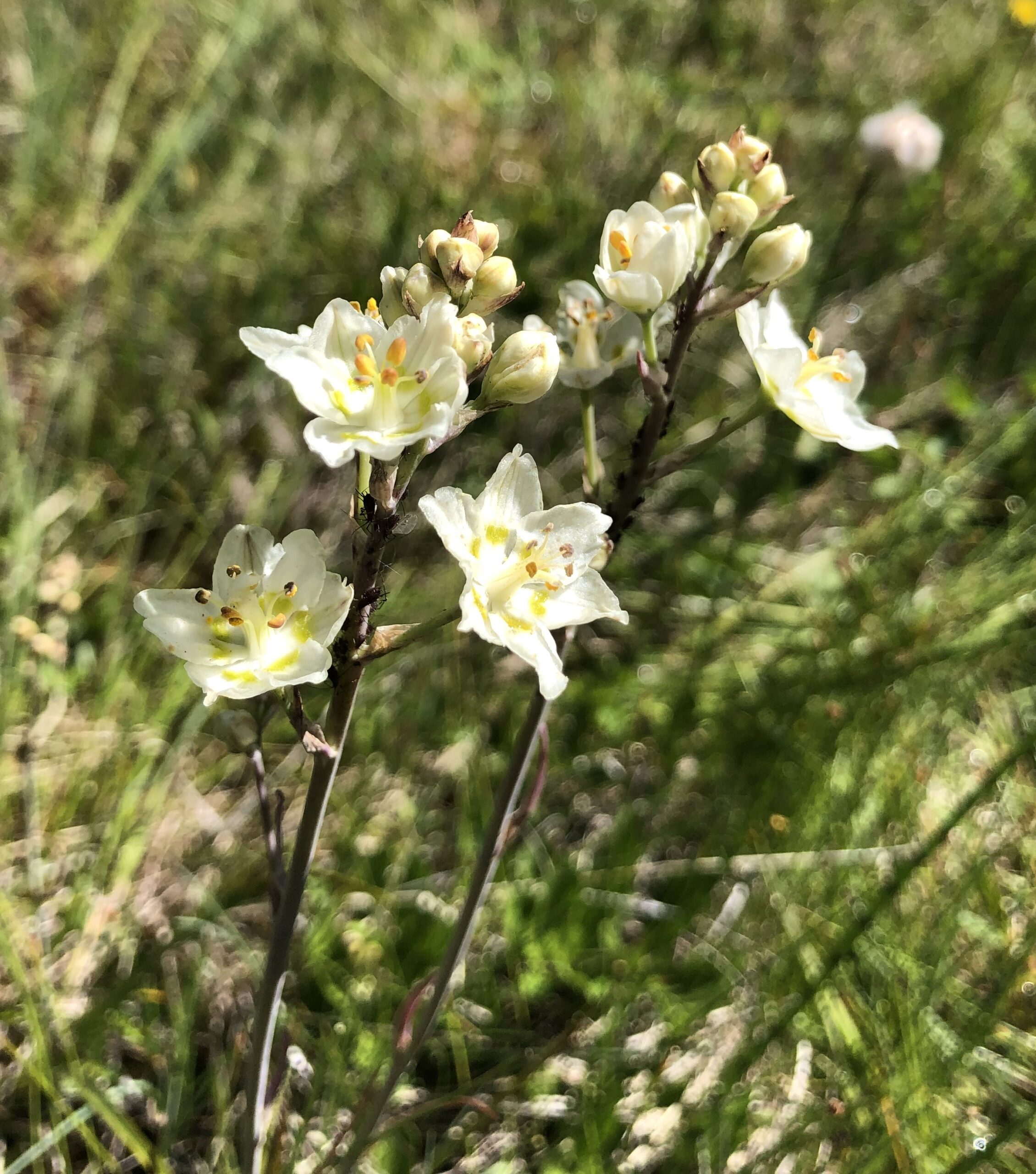
The making of a unique community: the fen and friends
Many of the rare plants we are searching for are encountered in wetlands, particularly fens. A fen is characterized by the presence of peat (sphagnum moss), a pH greater than 6 (neutral to basic), and a year-round supply of mineral-rich groundwater (Keddy 2010). The groundwater chemistry of a fen system determines the fen’s pH, with more basic fens considered “rich” in terms of species richness and more acidic fens considered “poor” (Wassen et al. 1996). Rich fens are often fed by groundwater running through limestone, which produces a bicarbonate buffer against acidity.
We surveyed a rich fen and a poor fen this month. The rich fen was a checkerboard of little microclimates, each inhabited by distinct species carving out little niches. We saw the rare orchid Liparis loeselii, a picky plant, that requires the convergence of many conditions: mossy tussocks to create microtopography, open vegetation, calcareous waters, and specific mycorrhizal fungi associations (Maris et al. 2023). Mycorrhizal associations are of particular importance to orchids. The dust-like seeds of orchids lack energy reserves for the embryo to germinate (Jacquemyn et al. 2017). During orchid germination, mycorrhizae send out hyphae that penetrate the cell wall and feed carbohydrates and nutrients to the tiny orchid. Without this intervention, the orchid lacks the fundamental building blocks to continue development. Different studies have shown the specificity of these associations, revealing the Liparis loeselii preference for a specific saprotrophic fungi in the Tulasnellaceae genus (Maris et al. 2023).
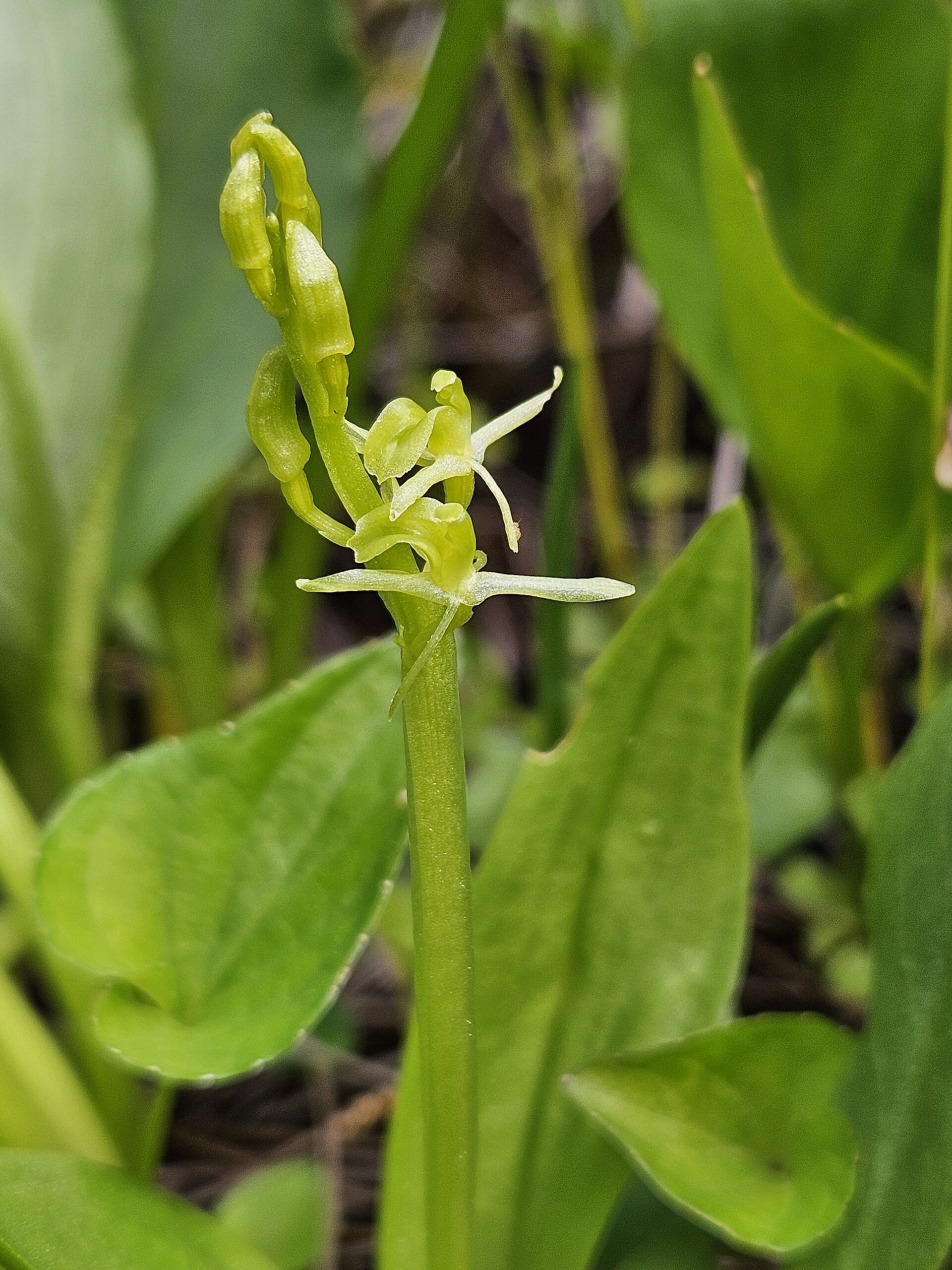
We also surveyed a poor fen composed predominantly of sphagnum (peat) mosses. The sphagnum mosses acidify and lower the nutrient availability of fens. Both the rich and poor fen contained Drosera rotundifolia, a sundew, but the poor fen contained larger patches. Sundew associate with sphagnum moss, which create floating mossy tussocks of desirable sundew habitat. The high-water table of a fen creates unique challenges for plant species, since nutrients from the soil are not easily attained. Sundew supplements its nitrogen needs by carnivalizing insects (Millett et al. 2012). The plants attract insects with a sugary, sticky mucus that coats the end of many little red stalks on their leaves. Once prey makes contact, the plant can move its tentacle-like leaves, a response called thigmonasty, to place the insect in contact with as many stalks as possible. The plant secretes digestive enzymes that dissolve the insect, and the leaf surface absorbs the nutrient-rich ex-insect soup.
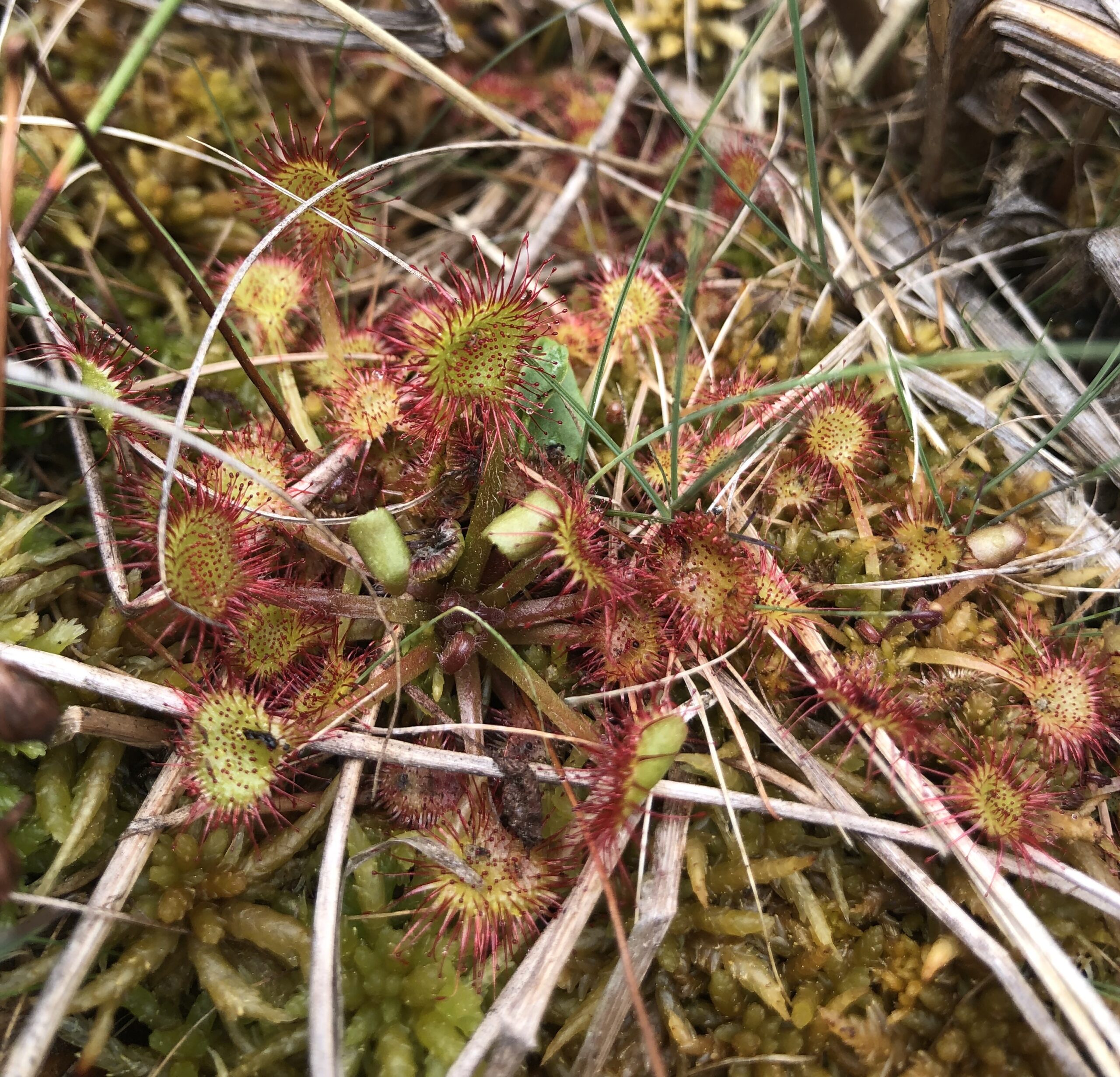

Turning tables: myco-heterotrophic and parasitic plants
Almost all orchids are myco-heterotrophic at some point in their lifecycle and with maturity they produce chlorophyll and begin making food of their own. Some orchid species, like those in the Corallorhiza genus, never “grow up” and they remain fully to partially myco-heterotrophic throughout their lifespan. Myco-heterotrophy are reversed plant-mycorrhiza relationships, where carbon exchange goes from fungus to plant (Trudell et al. 2003). These plants are sometimes referred to as “mycorrhizal cheaters.” Lying in the subterranean darkness for most of their lives, these plants mimic their mushroom host’s life cycle, popping up from the ground only to produce a reproductive structure (Zimmer et al. 2008).

While Corallorhiza and other myco-heterotrophic orchids parasitize fungi, the plant species of the Broomrape family (Orobancheae) parasitize other plants. The seeds of Orobanche uniflora stay in the soil for years, lying in wait until certain chemicals released from nearby plant hosts stimulate germination. The seedlings put out haustoria, rootlike structures, which delve into nearby host root tissue, siphoning off water and nutrients (Kokla & Melnyk 2018). The Latin work “haustor” translates to “the one who drains” and these little vampiric plants have an apt common name: cancer root.
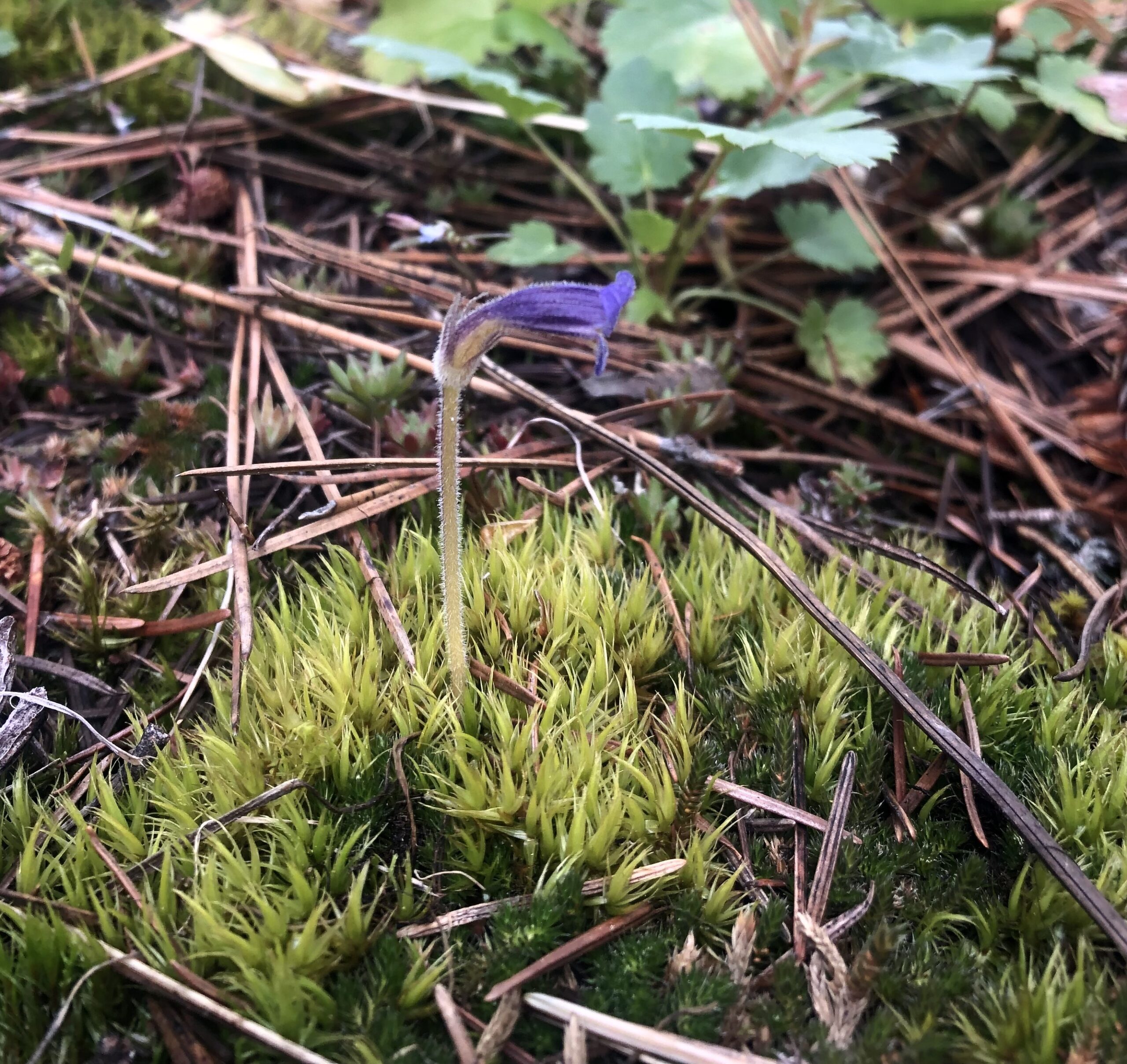
References
Dolan, Amelia., et al. “Bumble Bees in Montana.” MSU Extension, Aug. 2021, https://apps.msuextension.org/montguide/guide.html?sku=MT201611AG
Jacquemyn H, Waud M, Brys R, Lallemand F, Courty P-E, Robionek A and Selosse M-A (2017) Mycorrhizal Associations and Trophic Modes in Coexisting Orchids: An Ecological Continuum between Auto- and Mixotrophy. Front. Plant Sci. 8:1497. doi: 10.3389/fpls.2017.01497
Keddy, Paul A. (2010). Wetland ecology: principles and conservation (2nd ed.). Cambridge: Cambridge University Press. ISBN 978-1-139-22365-2. OCLC 801405617
Kokla A., Melnyk C. W. (2018). Developing a thief: Haustoria formation in parasitic plants. Developmental Biology, 442 (1) (2018), pp. 53-59, 10.1016/j.ydbio.2018.06.013
Maris, Louise & Petrolli, Rémi & Selosse, Marc & Legland, Thomas & Pache, Gilles & Griveau, Chantal & Torre, Franck & Lopez-Pinot, Dominique & Marciau, Roger & Bonnet, Véronique. (2023). Impact of the local environmental factors associated to plant-fungi communities on the conservation of Liparis loeselii (L.) Rich. In the French Rhône-Alpes region. Acta Oecologica. 120. 10.1016/j.actao.2023.103929.
Millett, J.; Svensson, B. M.; Newton, J.; Rydin, H. (July 2012). “Reliance on prey-derived nitrogen by the carnivorous plant Drosera rotundifolia decreases with increasing nitrogen deposition”. New Phytologist. 195 (1): 182–188. doi:10.1111/j.1469-8137.2012.04139.x. PMID 22506640
Mitton, Jeff. “A Rare Relationship between Death Camas and Death Camas Miner Bees.” Colorado Arts and Sciences Magazine, 1 Apr. 2022, www.colorado.edu/asmagazine/2022/04/01/rare-relationship-between-death-camas-and-death-camas-miner-bees.
Trudell, SA; Rygiewicz, PT; Edmonds, RL (2003). “Nitrogen and carbon stable isotope abundances support the myco-heterotrophic nature and host-specificity of certain achlorophyllous plants” (PDF). New Phytologist. 160 (2): 391–401. doi:10.1046/j.1469-8137.2003.00876.x. PMID 33832180.
Wassen, M.J., van Diggelen, R., Wolejko, L. et al. A comparison of fens in natural and artificial landscapes. Vegetation 126, 5–26 (1996). https://doi.org/10.1007/BF00047758
Zimmer K, Meyer C, Gebauer G (2008) The ectomycorrhizal specialist orchid Corallorhiza trifida is a partial myco-heterotroph. New Phytol 178:395–400. https://doi.org/10.1111/j.1469-8137.2007.02362.x
